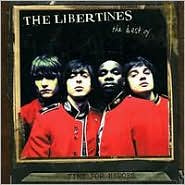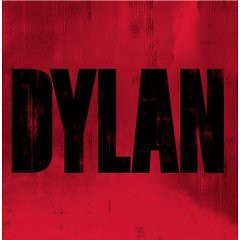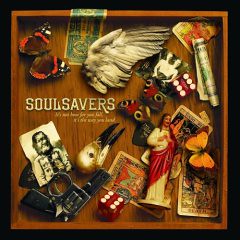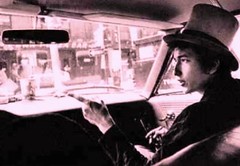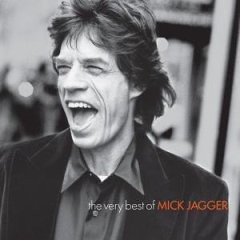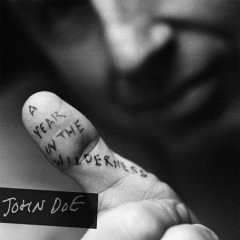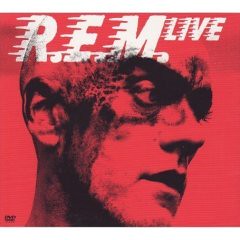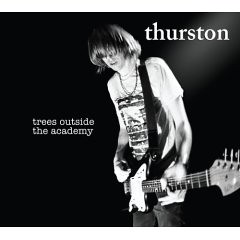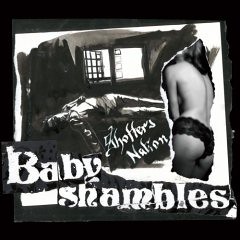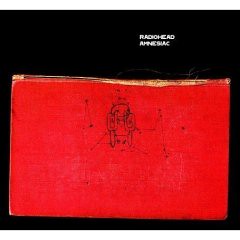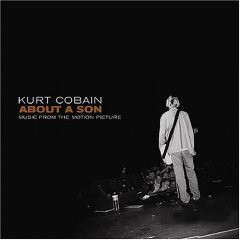My Good Fortune interview can be found (click here) on treblezine.com Good Fortune
Good Fortune:
an interview with Kyle Keyserby
Adrian Ernesto Cepeda10.03.2007
While doing research on Polly Jean Harvey, I discovered this little film that could, made in 2001 by diehard fan, Kyle Keyser. During 2001, Kyle Keyser just wanted to follow his favorite singer Polly Jean Harvey on tour in Europe. What he didn't know was that this one idea would change his life. I watched, in a span of over an hour of Kyle's documentary,
Stories from the Road: A Film About Following PJ, how he transforms from a fan into a filmmaker. Of course, it sounds more complicated than it sounds and it was.
The film begins with Kyle convincing Polly Jean's label, Island, that he and his two friends Amanda and Bill were filmmakers. Kyle sends them a proposal and they buy it. The first half of Kyle's road movie shows is shot with a shaky handheld camcorder shots a-la MTV's Real World. The first half of the movie reminded me of the behind-the-scenes fan exploits that I remember seeing in D.A. Pennebaker's film
Depeche Mode 101. That same film chronicled the exploits of a handful of friends following their favorite band on tour down Route 66.
Stories from the Road's opening footage documents the troubles these amateur film sleuths find in making a full-length documentary. These scenes, which have the feel of three friends on a Euro-trip, are actually Kyle and his buddies learning how to be filmmakers. They are quick studies and by the last stop of Polly Jean's date in Lisbon, they've learned the ropes and are ready to get the ultimate footage, but she unfortunately cancels the rest of the tour due to illness.
Film over right? Wrong. It turns out that Polly has scheduled some American tour dates, so after his troubles in Europe, Kyle gets organized. He takes the footage that he and his two friends shot in Europe, creates a two-minute trailer, and sends it to Polly Jean's label for permission to shoot footage on her American tour. This time he contacts Polly Jean's tour manager and the movie begins to take focus. It less backstage, behind the scenes tomfoolery and more focused dedication on filming PJ Harvey.
By this time in the film, there is a major change in Kyle. He was no longer the naïve fan shooting for fun, though I love the live footage that he shot in the States. In America, Kyle and Amanda got unprecedented access to Polly Jean's soundchecks. The movie caught fire with Kyle's goal of meeting and interviewing PJ Harvey. A few things get in the way, even though, fate tries desperately to help Kyle complete his quest of meeting his heroine and idol, though you have to watch
Stories from the Road to find out exactly what happens.
Alas, the movie is less about Polly Jean Harvey and more about the rebirth of an up and coming creative artist, Kyle Keyser. By coming up with this amazing and clever plan of getting a record label to allow him to film his favorite artist, Kyle has become a full-fledged filmmaker. The ultimate theme of
Stories from the Road is dreams do come true. You can find your true calling in life by taking a risk, a chance it could change your destiny forever, just ask Kyle Keyser.
There's a backstory to this amazing adventure. One of the things that I found missing in Kyle's film is that I never got a sense of why he was following Polly Jean Harvey. For this and other stories on his incredible journey, I asked filmmaker Kyle Keyser on his experiences on the road, following Polly Jean Harvey.
Treble: O
ne question you never addressed in the film was why Polly Jean Harvey? What is it about her music that drew you to create this movie?Keyser: I've always been a passionate music fan. I just connected to Polly right off the bat. I was living in England and I remember seeing her face splattered on magazines over the newsstands at the time
Rid of Me came out. I loved that album. It was dark, bold, and powerful. She was a badass with a guitar and an Indie diva in her own right. So of course, I was hooked.
Treble:
Through out the first half of the film, after the debacle of the canceled tour dates did you ever consider giving up finishing the film?Keyser: Yes, in fact I thought the film was over. I actually came back and got super depressed about the whole thing. I was wallowing in cosmic confusion. It was only when she announced new tour dates for the US did I know I had a chance to finish it. So I contacted her manager again and asked to finish it in the US. She agreed. So we were off.
Treble:
I really enjoyed the live footage were those shots the hardest to shoot?Keyser: These shots were definitely the shots that had the most pressure, so yes. Especially with me not knowing what I was doing they were exceptionally difficult. I got it in the end though. And a better editor helped.
Treble:
I noticed a change in you, during the course of the film, going from fan to actual filmmaker? Did you yourself feel this change while making the film?Keyser: It's funny you say that because others do as well. It's certainly not something I knew at the time. If anything I was becoming antsy because I felt this increasing pressure to meet Polly with decreasing opportunity. So no, I didn't really have the mind space at the time to think about being a filmmaker. I seriously just wanted to meet PJ Harvey.
Treble:
Any regrets on not meeting Polly Jean during the filming process?Keyser: When I got back from the whole trip I felt another huge sense of disappointment much like after we first got back from the first tour in Europe. I didn't really know what I was going to do with the film. I thought, "How am I going to make a movie about NOT meeting PJ Harvey?" But then it struck me... that's the story.
Once it was done I realized that it was actually the best thing possible. Every piece that depressed me along the way ended up making the film so much stronger. It's such a true, honest story. I really think all the fuck-ups and missed opportunities along the way are the key to the film's success.
Treble:
Why haven't we seen the film in theaters? What happened?Keyser: I received permission to shoot the shows from Polly's management company and received preliminary permission to license a few tracks from, her record label, Island Records. After finishing the film I approached everyone again, this time with a list of 13 tracks to license, and they balked. I also didn't realize I needed to involve her publisher, EMI. They didn't even know about the project. They rejected me flat out. No one else from Polly's camp came to my aid. So after getting my attorney to fight it and really struggle, they never budged. My response to that was premiering it at the London Lesbian & Gay Film Festival (LGLFF) anyways (one of the biggest festivals in the UK ). It got great reviews that were great but ultimately just drew attention to what I'd done.
Just after that I also had a big U.S. premiere at the Atlanta Film Festival but things were getting sketchy. Right after London both The LGLFF and I received letters accusing us of copyright infringement. Since I told them my film was legit, the festival deferred to me. It was a risk showing it one more time in Atlanta but I went for it. There was a lot of local buzz. I showed it but it was for the last time
Treble:
Have you tried to secure the song rights?Keyser: I haven't pursued it officially since the first time. I think it might be possible but there would need to be money involved. And I certainly don't have any.
Treble:
Has PJ seen the final cut of the film?Keyser: I think she has, yes. I sent both her manager and record label copies. Maria Mochnacz, filmmaker who's done PJ's video, heard about it just after the premiere and contacted me for a few copies. I went to her office and dropped a few off. She insisted she'd help me get the rights once she'd shown it to Polly. She was enthusiastic to talk with me until, one day, it was dropped. No more contact. I'd assumed PJ had seen it and didn't like it.
Treble:
Any regrets to all that has happened?Keyser: Not one. It was an amazing experience and it set me on my current path as a filmmaker.
Treble:
Have your feelings for Polly Jean changed through the course of filming and your experiences after trying to get the film shown?
Keyser: Yeah, I hated her for a while after all the legal troubles. I really wished she would have just come to my aid but she never did. Since, I've outgrown it. I actually like the cult-ish following about the film. She actually did me a huge favor every step along the way.
Treble:
What are you doing now?Keyser: Right now I continue to make movies. I have a few TV concepts I'm fleshing out and hoping to sign a deal on soon.
Treble:
Any chance we will ever get to see, the promise you hint at the end of your film, you following around Rufus Wainwright?Keyser: I toyed with the idea but decided no. I wasn't going to be "that guy" who followed people around. I actually got to meet Rufus at a show in Athens after coordinating through his management. I was able to give him a copy of the film and told him to look out for his reference in the end. Who knows if he ever saw it?
Treble:
Are you looking forward to Polly Jean's new album, White Chalk? Have you heard any new tracks?Keyser: I like it. It has a very fall sounding vibe. It's not the `in your face' Polly that we all know and love. She doesn't even play guitar on it, just piano but I still really like it. Polly is an artist even more than she's a musician I think. She craves re-definition and challenge. This is her journey, not ours. And White Chalk is one point in that evolution as an artist.
Treble:
You capture some amazing footage of 9/11 in D.C. How was that time there? It must have been chaotic. (I love the way you blend "The Mess Were In" with the 9/11 footage, Brilliant and powerful.)
Keyser: Thank you. It's a powerful, surprising moment. I seriously get chills every time I see it again. That was how I experienced 9/11 from that hotel room, listening to that television. Watching the smoke coming from The Pentagon brings back a lot of strong memories and emotions.
Treble:
It seems that the film starts off as like a joyride and turns into a serious journey, kind of like life, wouldn't you say?
Keyser: You could say that. It's definitely a journey that evolves organically, running with the twists that get throw to you all along the way. Who would have thought all that would have ever happened? But seriously, who would have ever thought – when I started the whole thing – that I'd be premiering the film in London two years later to a sold out crowd of 450?
There's something to be said for just getting up and just doing it, folks.
Treble: Any chance the Stories from the Road will ever get released on DVD?
Keyser: I guess the answer to that question lies solely with me. I'll just have to continue to work hard and try to make it. But who knows, stranger things have happened, right? One day...
* For More information about the film S
tories from the Road: A Film About Following PJ Harvey, please visit
www.followingpj.com
